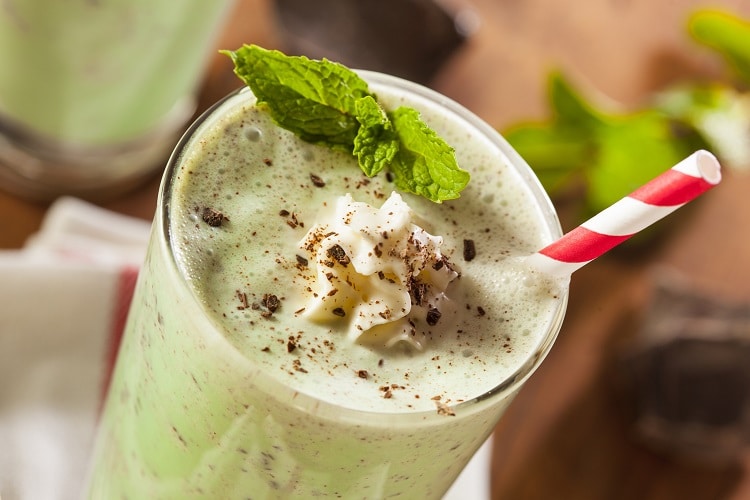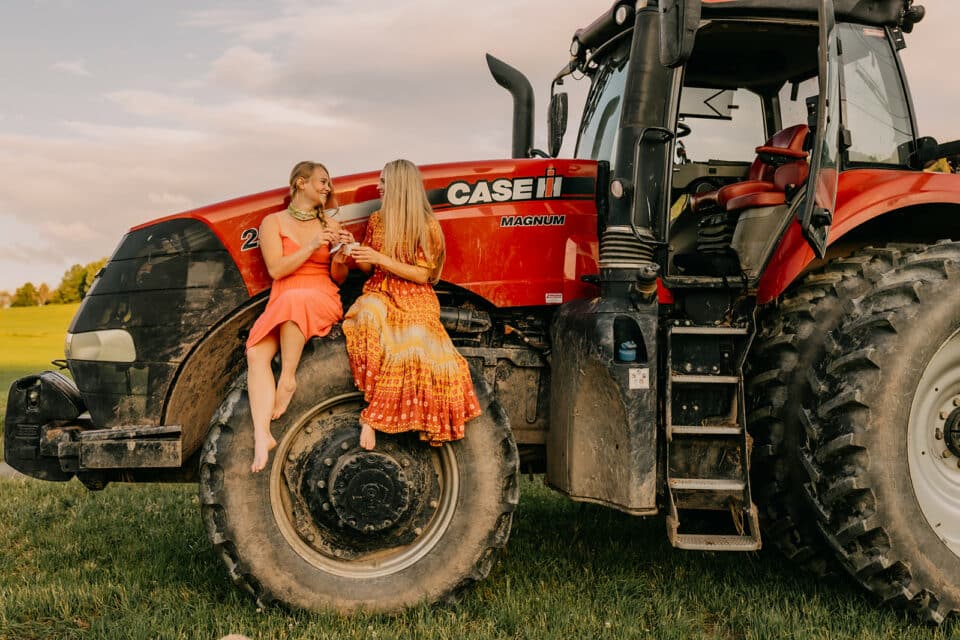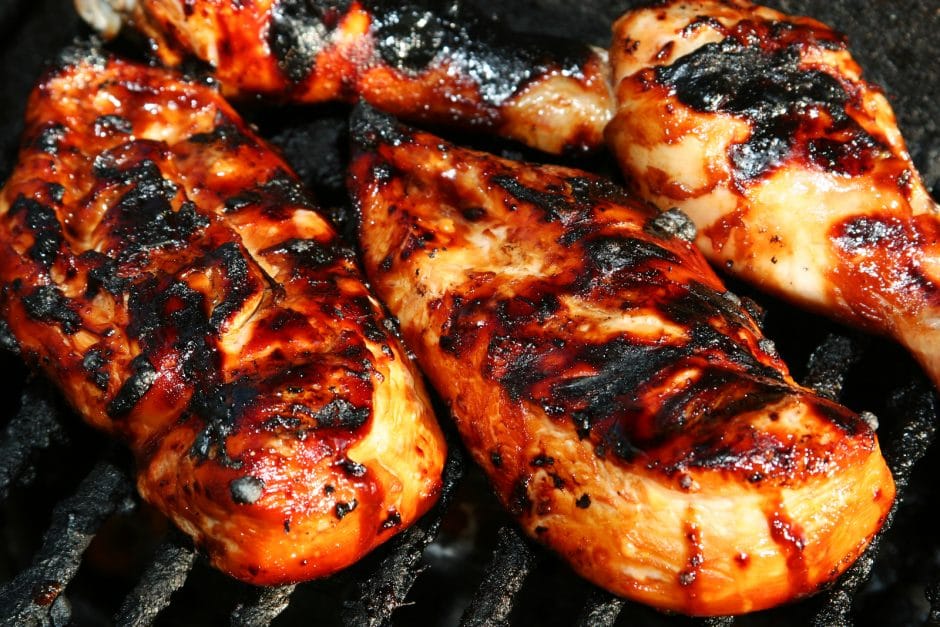
Grilling season is here—time for cookouts on the deck with friends, barbecuing a rack of ribs, searing marinated chicken and doling out potato salad. But before you crack open a beer and get to work over an open flame, it’s important to keep in mind a few food safety tips.
Recently, the U.S. Department of Agriculture’s Food Safety and Inspection Service (FSIS) expanded the hours for its Meat and Poultry Hotline to 10 a.m.–6 p.m. EST. The organization is your go-to for any food preparation questions or mishaps you might have. Simply give them a call or use their chat feature to “Ask Karen” at askkaren.gov.
FSIS shared some essential grilling tips for backyard party success. Read on, fire up that grill and have the most delicious summer ever!
Before You Start
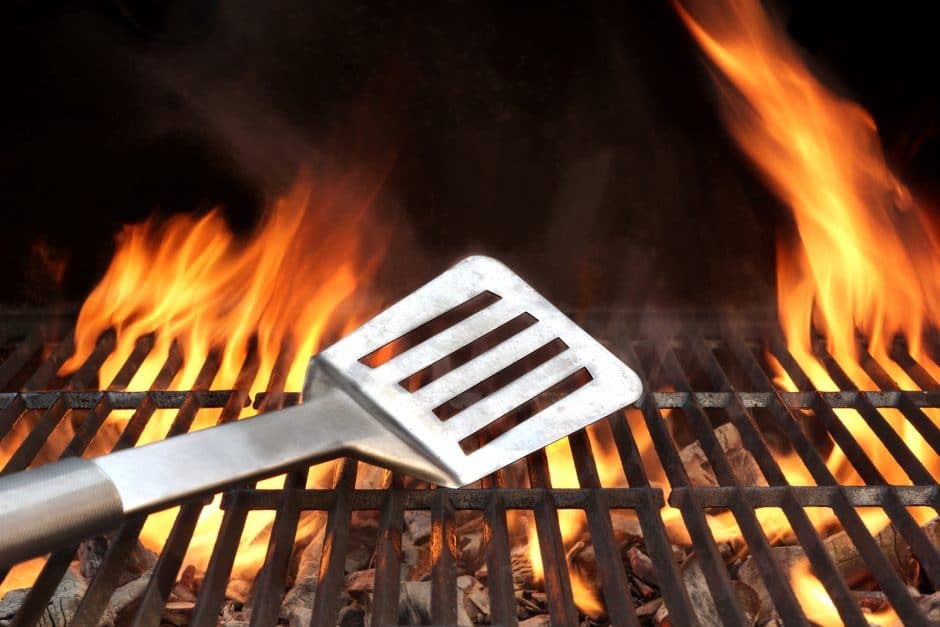
Some consumers think they are removing bacteria and making their meat or poultry safe if they wash it before cooking, but this practice is not recommended. Bacteria in raw meat and poultry juices can easily be splashed onto other foods, utensils and surfaces in your kitchen. Cooking to the right temperature kills bacteria, so washing food is not necessary.
You should, however, clean the utensils you plan to use, your dishes and your hands. If you’re carrying your meat to the grill on a plate, it’s also key to bring another clean plate with you to use when you take the finished product off the grill. Doing so will help avoid cross-contamination with the plate that contained the raw meat.
Is It Done Yet?
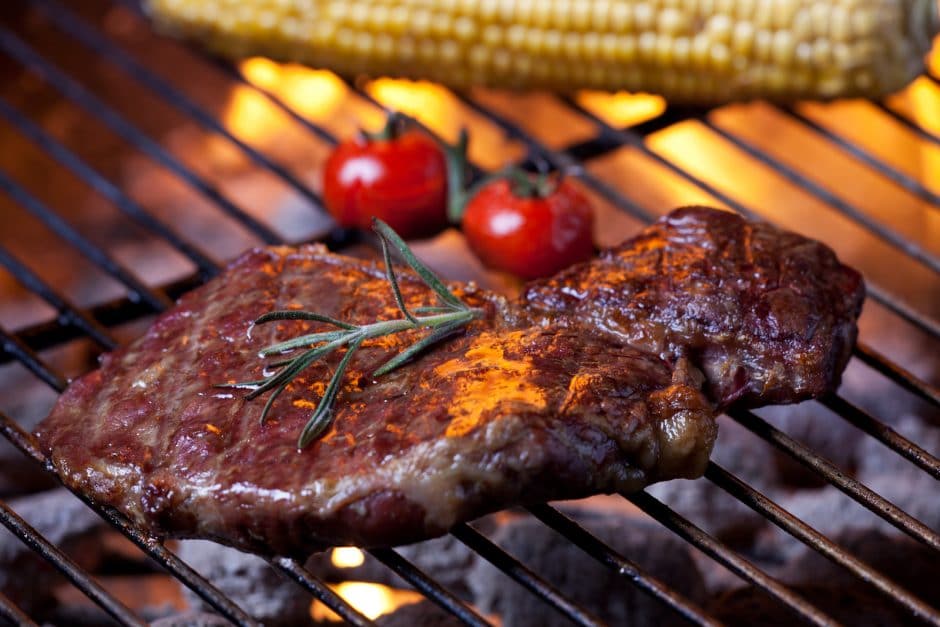
The only sure-fire way to tell that meat and poultry are reliably cooked is by using a food thermometer. Color and firmness are definitely factors, but not true indicators. If you’re grilling while entertaining friends, you probably have a lot going on, so it’s important to use a thermometer to ensure you’re serving thoroughly cooked food to your guests.
Is this all seeming like a bit too much to remember? Not to worry. The Food Safety and Inspection Service has made it simple. To grill like a PRO, remember:
- PLACE the thermometer,
- READ the temperature (see USDA’s recommended temperatures chart for various foods),
- Then take the meat OFF the grill.
Easy as that!
Check out the handy infographic below to discover safe cooking temperatures for commonly grilled meats:
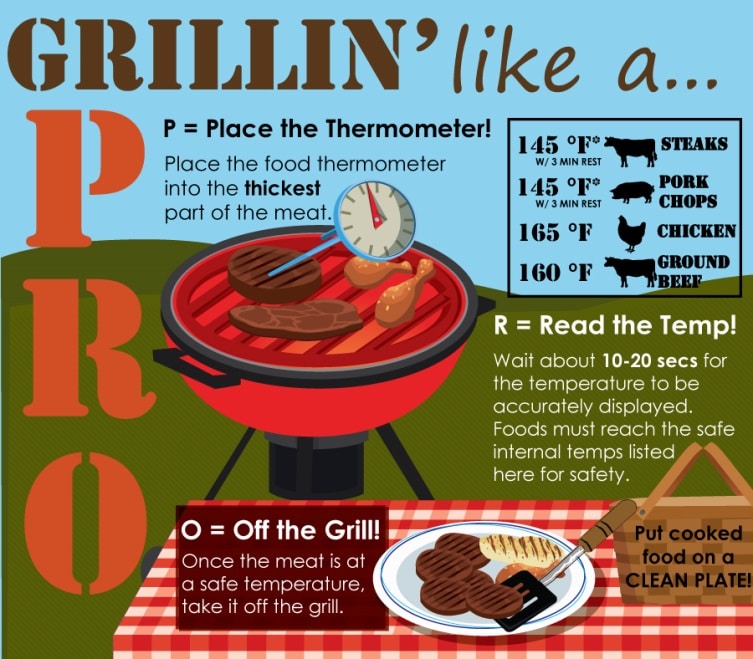
Serving and Storing
As a general rule, you should always try to keep hot food hot and cold food cold. That’s 140⁰F minimum for “hot holding” and 40⁰F or less for keeping foods cold.
Once you take your meat off the grill, try not to leave it out for more than an hour. Serve cold food on ice and in serving dishes in small quantities that you can replenish from a larger dish you keep in the refrigerator. And as tempting as it might be, don’t save food that has been out in the heat for too long. No more than 1 hour is recommended for warm temperatures (in the 80s or near 90⁰F), and no more than 2 hours (deemed the “2-hour rule”) for temperatures similar to room temperature, like inside your home.
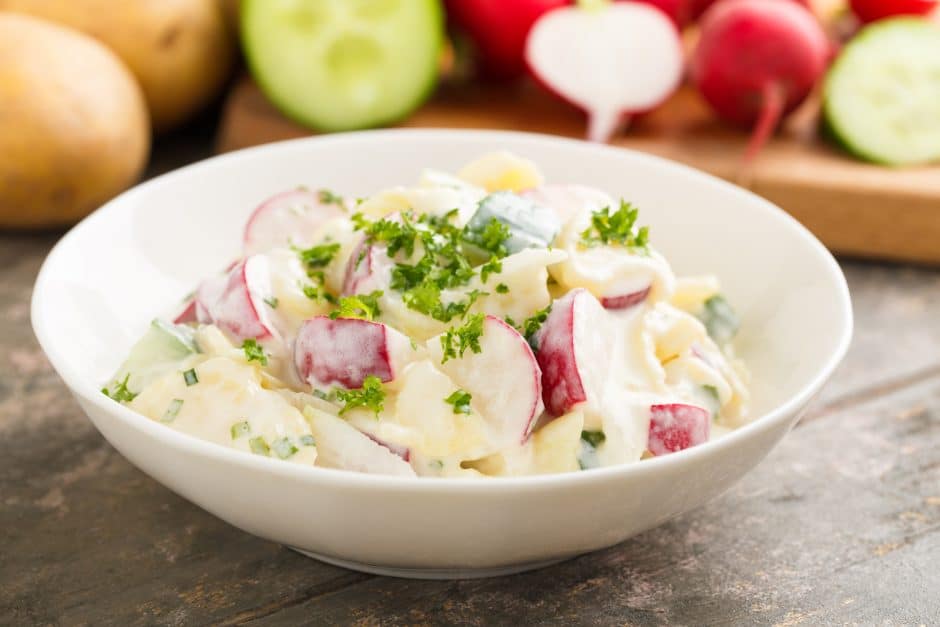
Entertaining on the go? When packing food in a cooler, layer items with ice or ice packs and ensure that food is chilled before it’s packed up. You can even freeze water bottles for an extra cold source. If the cooler is only partially filled, pack the remaining space with more ice.
To ensure that your food stays cold, pack two coolers—one for drinks and one for food. That way, as guests help themselves to drinks the food cooler won’t be opened as often.
Last but not least, passing around hand wipes before serving your meal will ensure that everyone can enjoy their food safely.
Have more questions? The Food Safety Inspection Service’s Meat and Poultry Hotline can be reached at 1-888-674-6854 or by visiting www.foodsafety.gov.
- Infographic: Food Safety and Inspection Service
- Photos: BigStock
